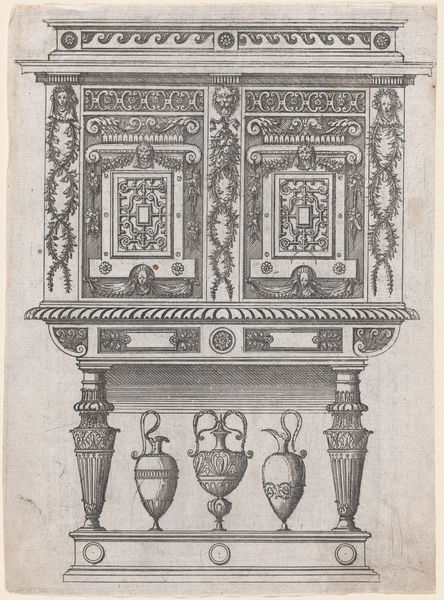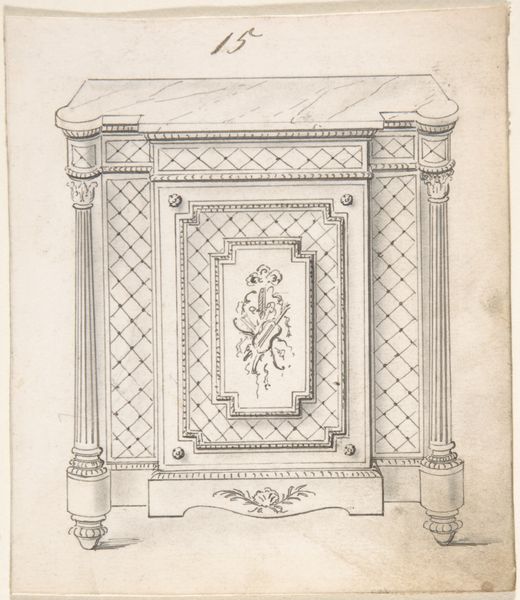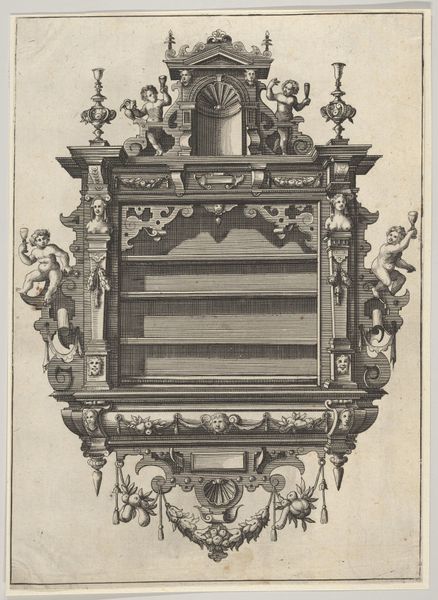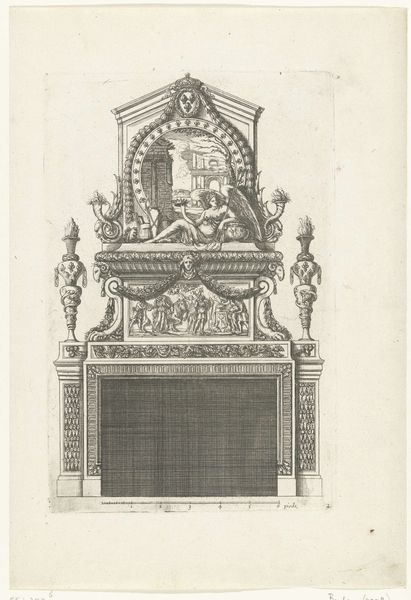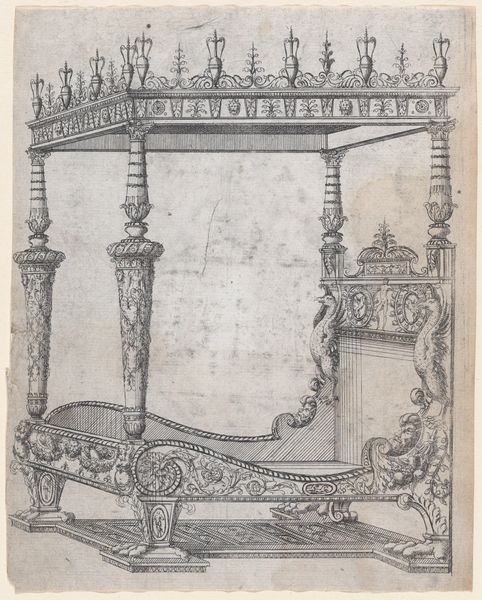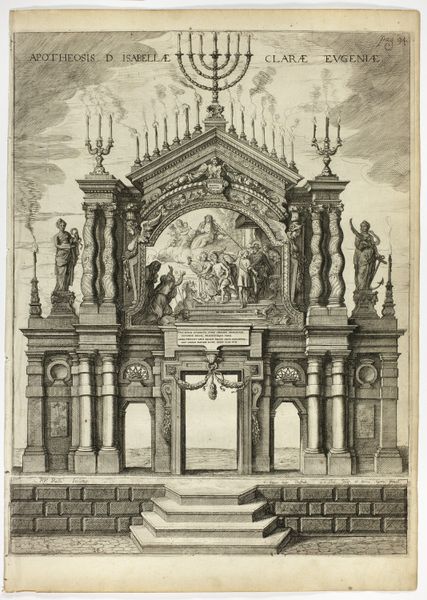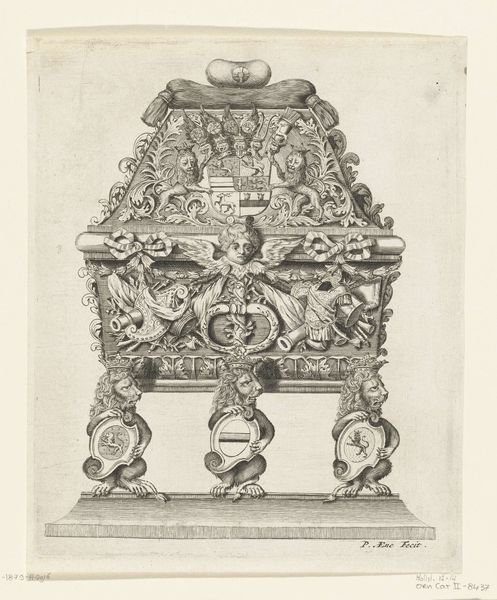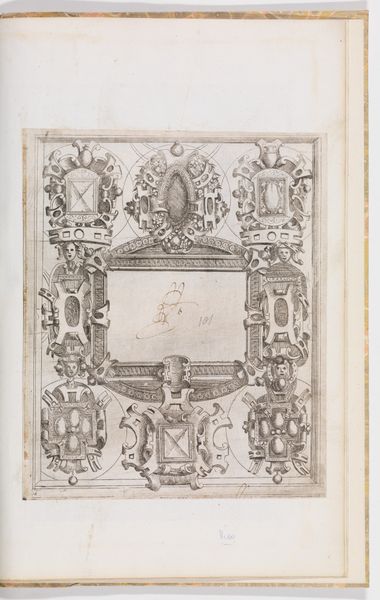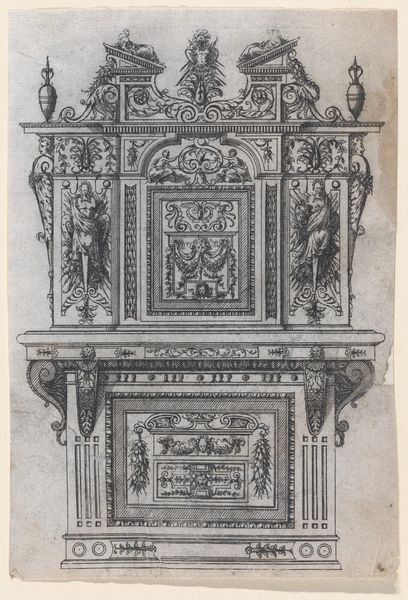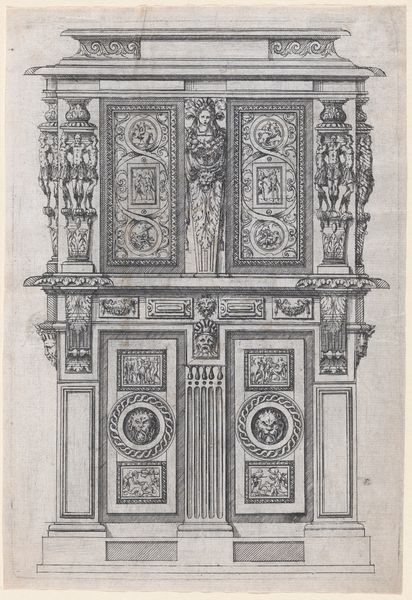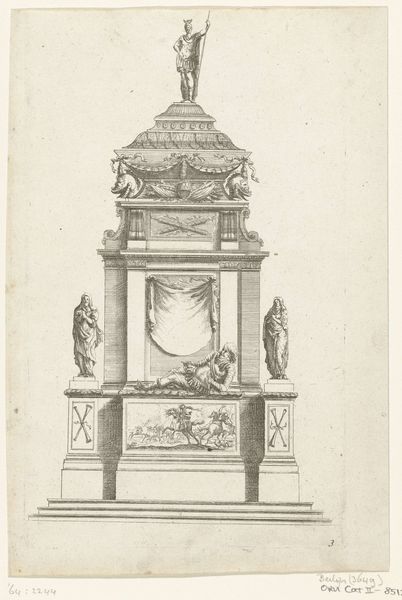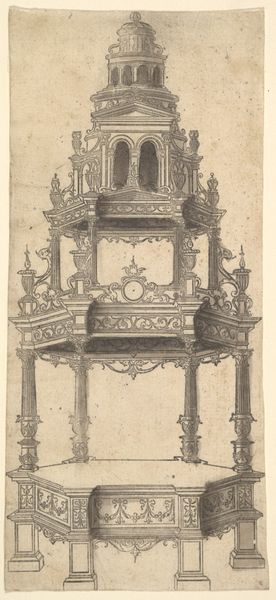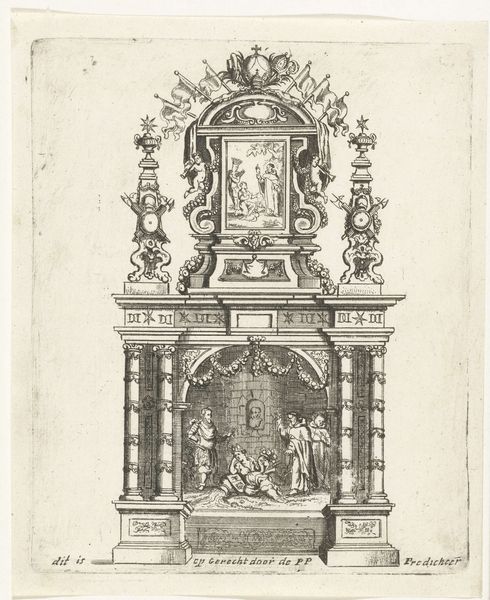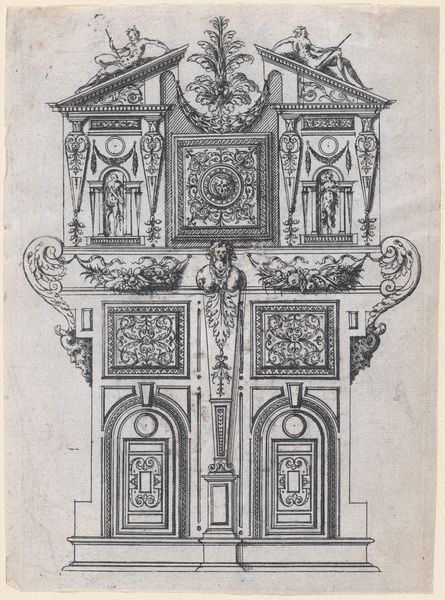
drawing, print, engraving
#
drawing
# print
#
form
#
11_renaissance
#
line
#
decorative-art
#
italian-renaissance
#
engraving
Dimensions: Sheet: 7 7/8 × 5 5/16 in. (20 × 13.5 cm)
Copyright: Public Domain
Editor: This is "Design for a Four Poster Bed," an engraving by Jacques Androuet Du Cerceau dating from about 1565 to 1570. The intricacy of the design is just astounding. What details particularly stand out to you? Curator: I am struck by the emphasis on verticality and the deployment of classical motifs. Note the use of superimposed orders on the bedposts – an assertive architectural statement rendered in miniature. Observe how the artist utilizes line, not merely to depict form, but to define its very essence. Consider, also, the pronounced symmetry. What effects do you think this structure intends to evoke? Editor: The symmetry creates a sense of formality and grandeur, almost like a royal stage. The line work really emphasizes the ornamentation, so everything appears weighty and important. But wouldn't that level of detail feel overwhelming in reality? Curator: Perhaps. Yet, within that detail resides a carefully considered system. The repetition of certain elements—the festoons, the grotesque masks—contributes to an overall sense of harmonious balance. Do you see any particular visual relationships that connect distinct zones of the artwork? Editor: I see how the rhythm of the drapery’s scalloped edges above mimics the garland draped on the headboard. Curator: Precisely. It is through these subtle correspondences, that the design transcends mere decoration and achieves a higher order of visual coherence. What do we make of the frieze inset in the headboard? Editor: It seems to depict some sort of battle. So this isn't just a bed; it's declaring power and celebrating victories. The form speaks to something beyond domesticity, right? Curator: Indeed. We must consider that these beds were rarely just for sleeping, but to perform ceremonies of waking and sleeping in front of audiences. Now how does considering function change your visual understanding of the work? Editor: I'm now seeing it more as a performative stage, meticulously designed to communicate power and status, through ornamentation. Curator: Indeed. This close formal analysis enriches our perspective and lets us grasp underlying design values, providing deeper insights.
Comments
No comments
Be the first to comment and join the conversation on the ultimate creative platform.
